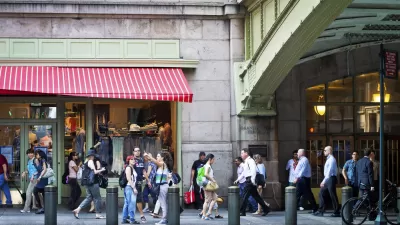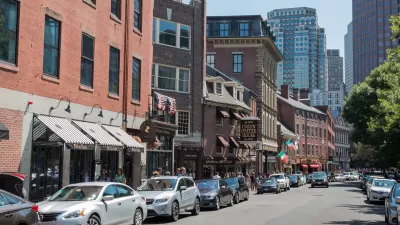New York's new big plans are actually quite small, according to this architectural review from The Guardian.
Small-scale projects and low-rise buildings are the newest and most exciting projects in New York City today, according to Jonathan Glancey.
"Yet during the few days I spent in New York last week, many of the most talked-about architectural and urban planning projects were low-rise and even low-key. Partly that's down to the opening earlier this month of the second phase of the High Line Park, a green walkway along the old elevated freight railroad running through the West Side's former meatpacking district, and designed by James Corner Field Operations with local architects Diller Scofidio and Renfro, and Dutch planting designer, Piet Oudolf.
But Jayne Merkel, the distinguished New York historian, told me when we met that she thought, if anything, the High Line had been overhyped: "It's fun to walk along as a tourist and occasionally to wander," she said, "but it's much less significant than other places that have been created or are being created for people to relax in the middle of the city." Such as? She points to the reclamation of several lanes of traffic for pedestrian use from about 47th Street all the way down to 14th Street, and their embellishing with tables and chairs provided by the city. Hardly the wildest of ideas, but effective nonetheless. 'As a Brit,' she continued, 'you may not be aware just how radical this ... for most people the only public space is a bench in a privately owned shopping mall.'"
FULL STORY: Constructive criticism: New York's architecture comes down to earth

Maui's Vacation Rental Debate Turns Ugly
Verbal attacks, misinformation campaigns and fistfights plague a high-stakes debate to convert thousands of vacation rentals into long-term housing.

Planetizen Federal Action Tracker
A weekly monitor of how Trump’s orders and actions are impacting planners and planning in America.

San Francisco Suspends Traffic Calming Amidst Record Deaths
Citing “a challenging fiscal landscape,” the city will cease the program on the heels of 42 traffic deaths, including 24 pedestrians.

Defunct Pittsburgh Power Plant to Become Residential Tower
A decommissioned steam heat plant will be redeveloped into almost 100 affordable housing units.

Trump Prompts Restructuring of Transportation Research Board in “Unprecedented Overreach”
The TRB has eliminated more than half of its committees including those focused on climate, equity, and cities.

Amtrak Rolls Out New Orleans to Alabama “Mardi Gras” Train
The new service will operate morning and evening departures between Mobile and New Orleans.
Urban Design for Planners 1: Software Tools
This six-course series explores essential urban design concepts using open source software and equips planners with the tools they need to participate fully in the urban design process.
Planning for Universal Design
Learn the tools for implementing Universal Design in planning regulations.
Heyer Gruel & Associates PA
JM Goldson LLC
Custer County Colorado
City of Camden Redevelopment Agency
City of Astoria
Transportation Research & Education Center (TREC) at Portland State University
Jefferson Parish Government
Camden Redevelopment Agency
City of Claremont





























